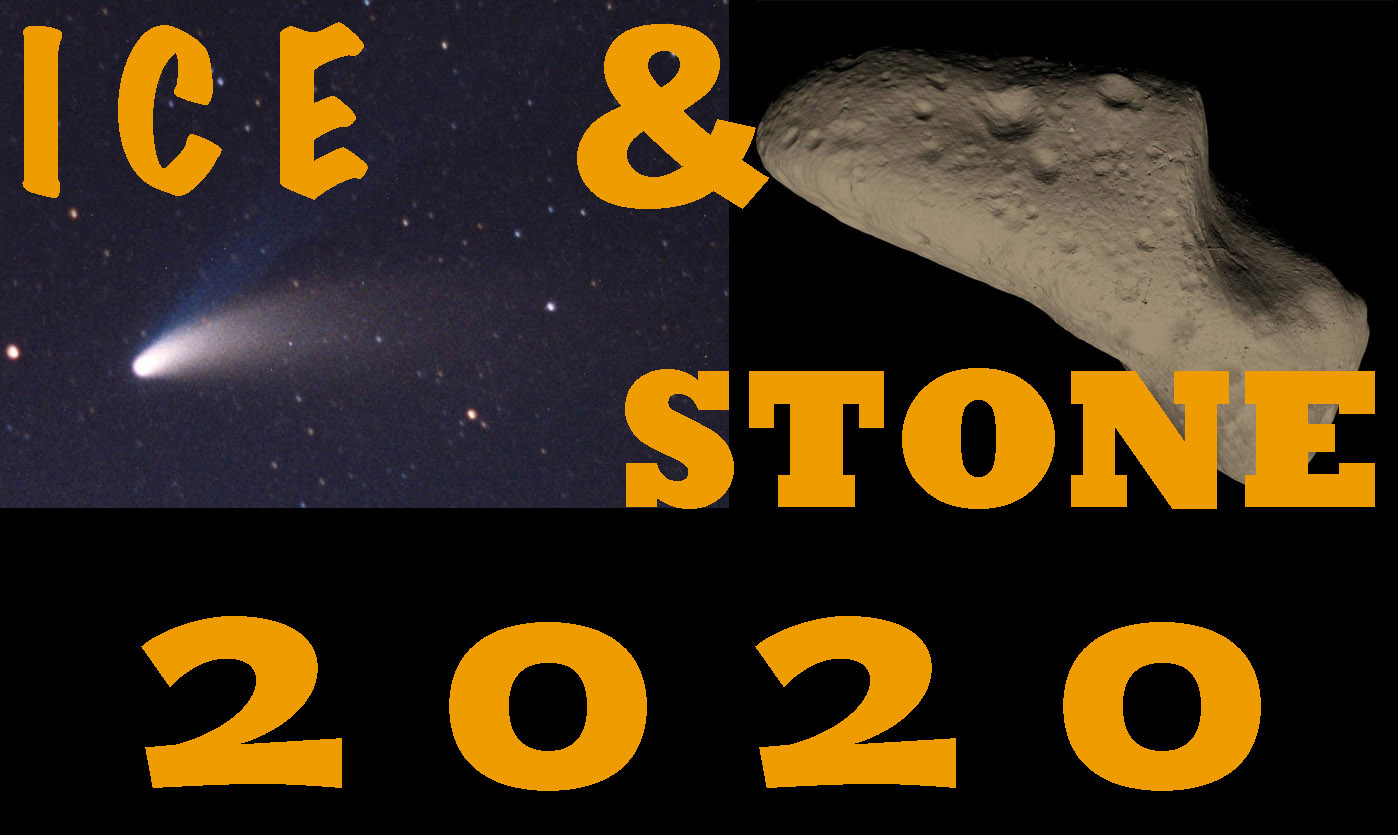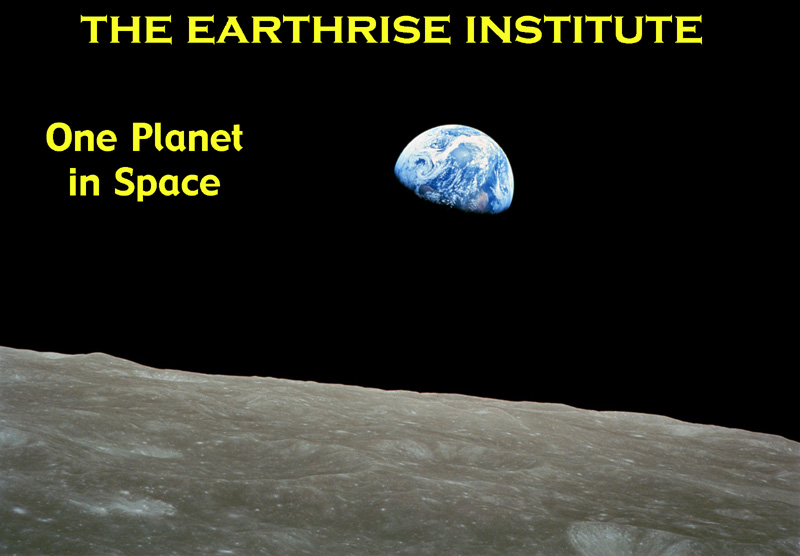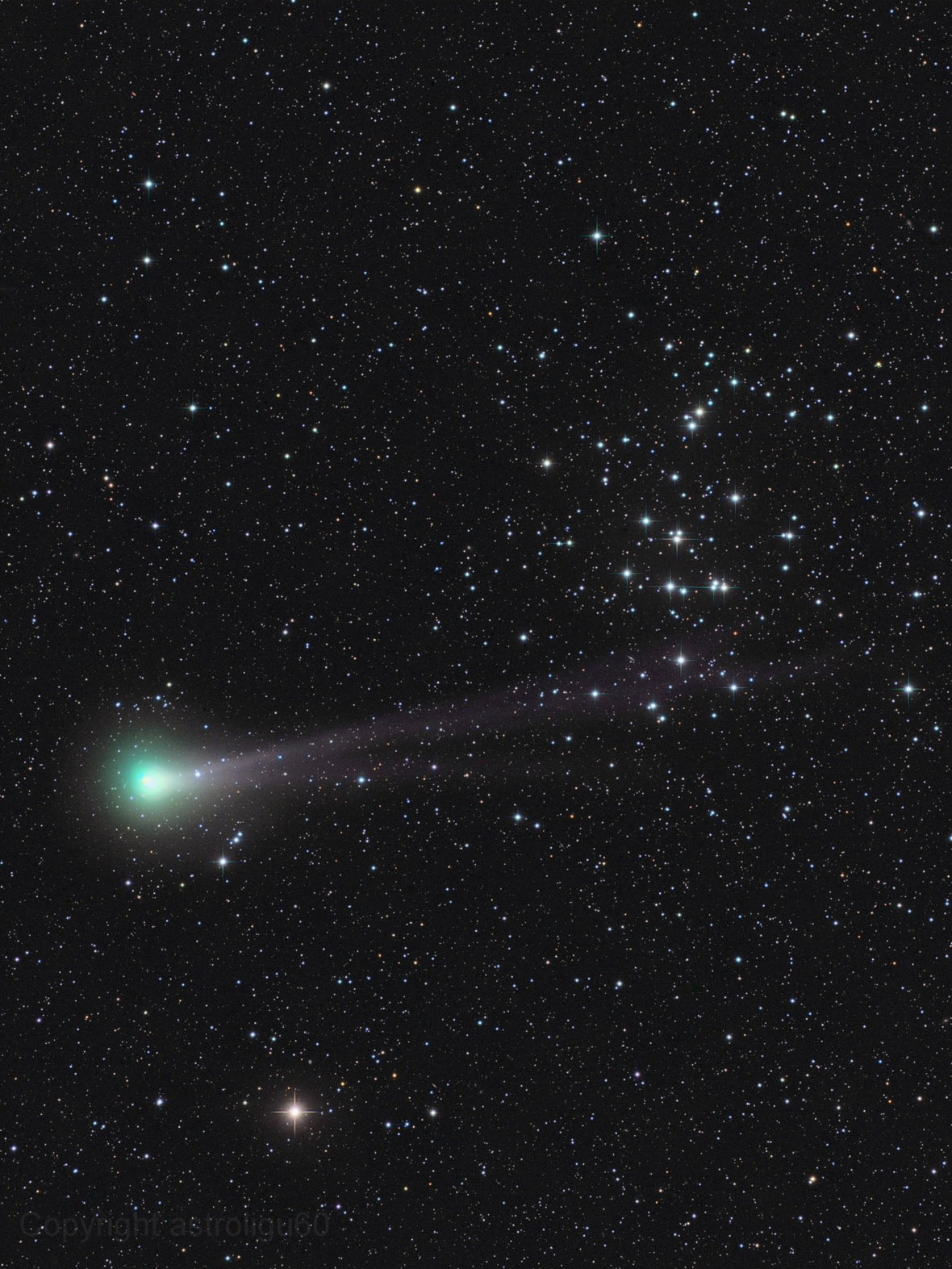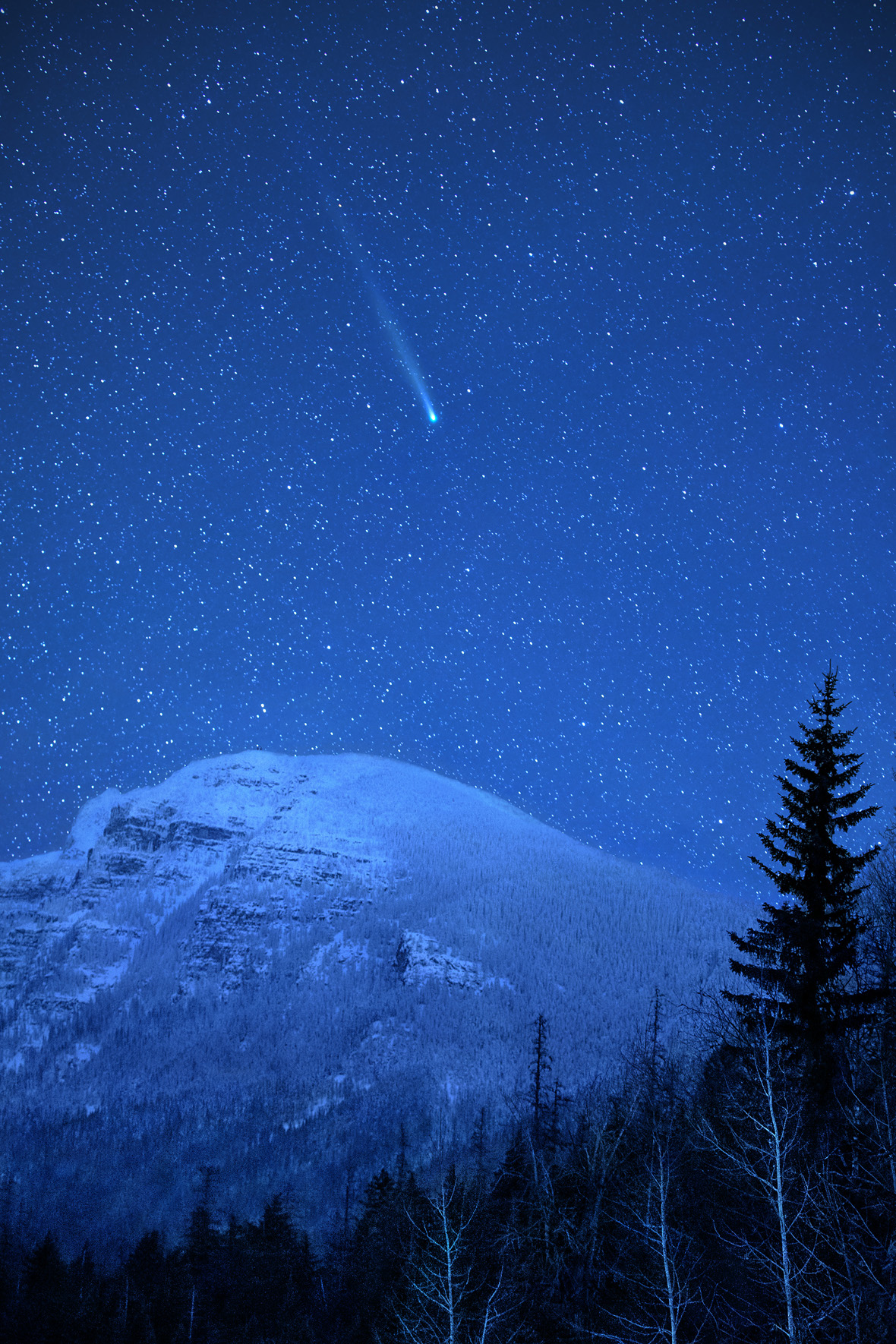

COMET OF THE WEEK
WEEK 50: DECEMBER 6-12
COMET LOVEJOY C/2013 R1
Perihelion: 2013 December 22.73, q = 0.812 AU
There was, however, another comet around that same time, which although it was never expected to become, and did not become, anything close to a “Great Comet,” nevertheless did become visible to the unaided eye and offered a bit of a consolation prize. This particular comet was discovered on September 7, 2013 by an amateur astronomer in Queensland, Terry Lovejoy, who among other things has pioneered the use of DSLR photography for discovering comets and who discovered six comets between 2007 and 2017, including Comet C/2011 W3 which will be “Comet of the Week” two weeks from now. At the time of Lovejoy’s discovery this comet was located a few degrees east of the Great Orion Nebula M42 and was about 14th magnitude.
The comet brightened rapidly as it approached perihelion, and by early November it had already reached 6th magnitude. It passed closest to Earth, 0.40 AU, on November 19, and during late November and early December was near its peak brightness of 5th magnitude and exhibiting a tail a few degrees long in binoculars. It began a slow fading afterwards, being just fainter than 6th magnitude in early January 2014, then dropping to 8th magnitude by February and to 13th magnitude when I saw it for the last time in early June. The final astrometric observations were obtained in September.
I commented in the “Comet of the Week” entry for Comet 153P/Ikeya-Zhang P/2002 C1 that my father passed away three days after that comet’s perihelion passage. It is only fitting that another bright comet should be in the sky when my mother, Ruth Elsa Perkins, did so at the age of 94 on December 7, 2013, right around the time that Comet Lovejoy was near its brightest. While my father’s comet will be back to check up on us in a little over three centuries, it will be a bit longer for my mother’s comet: according to orbital calculations, it should be back our way in a little over 8200 years.

 LEFT: Comet Lovejoy and the Beehive star cluster M44 on November 7, 2013, as imaged by a remotely-controlled telescope in New Mexico. Courtesy Rolando Ligustri in Italy. RIGHT: Comet Lovejoy from Montana on December 7, 2013, the morning my mother passed away. This image approximates the view the comet exhibited in binoculars. Courtesy John Ashley.
LEFT: Comet Lovejoy and the Beehive star cluster M44 on November 7, 2013, as imaged by a remotely-controlled telescope in New Mexico. Courtesy Rolando Ligustri in Italy. RIGHT: Comet Lovejoy from Montana on December 7, 2013, the morning my mother passed away. This image approximates the view the comet exhibited in binoculars. Courtesy John Ashley.
While in my mind I associate Comet Lovejoy with my mother’s passing, there were some happier events taking place in my life as well. Both of my sons graduated from college while Comet Lovejoy was around, my older son Zachary in December 2013 and my younger son Tyler in May 2014 (by which time the comet had faded to magnitude 12.5 but I was nevertheless still following it). I am reminded that, as the various comets come into our sky, stay around for a while, and then head back out into the depths of space, the circle of life continues here on Earth.
“Comet of the Week” archive
Ice and Stone 2020 home page
Earthrise Institute home page